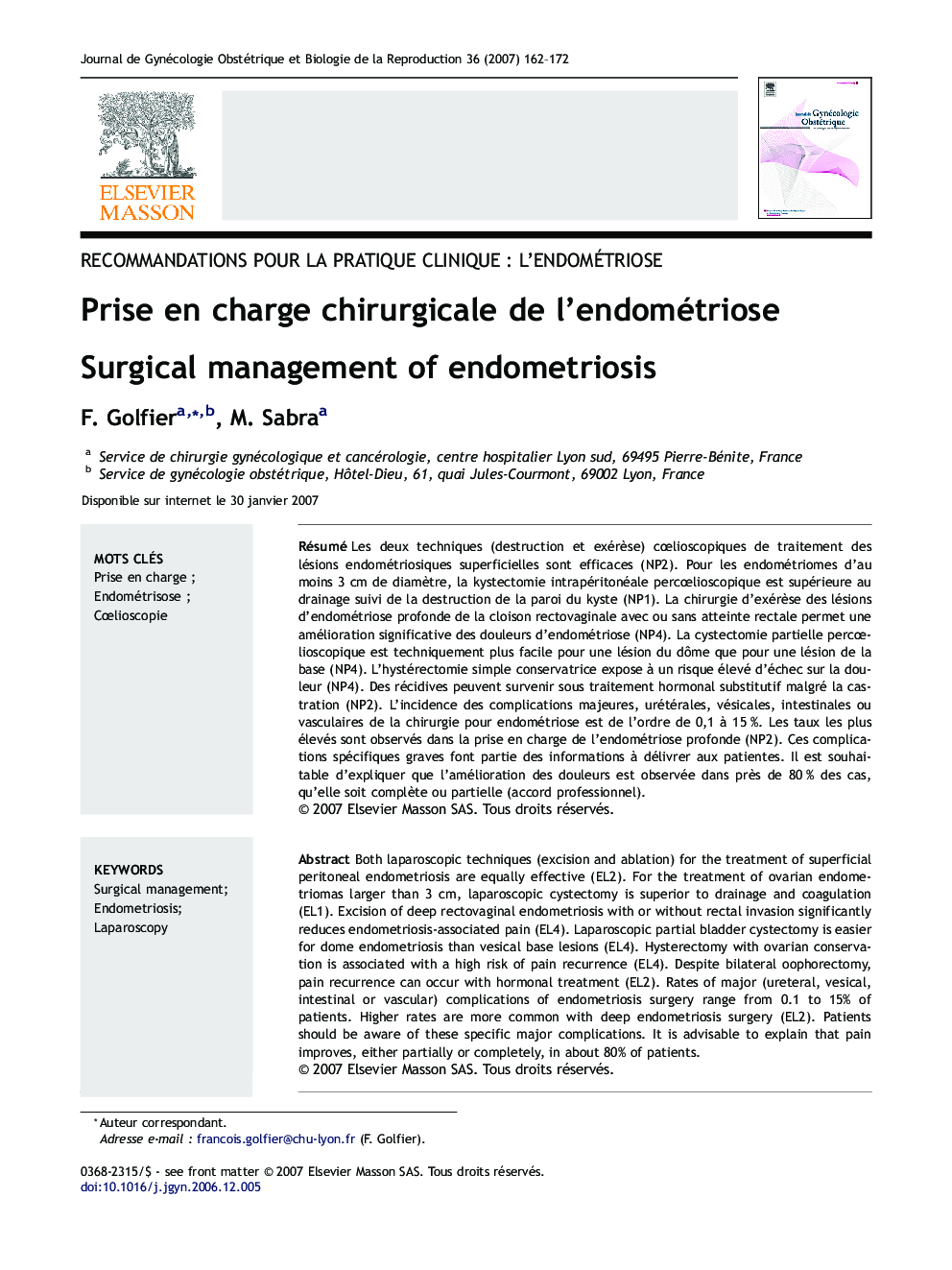| Article ID | Journal | Published Year | Pages | File Type |
|---|---|---|---|---|
| 3273648 | Journal de Gynécologie Obstétrique et Biologie de la Reproduction | 2007 | 11 Pages |
Abstract
Both laparoscopic techniques (excision and ablation) for the treatment of superficial peritoneal endometriosis are equally effective (EL2). For the treatment of ovarian endometriomas larger than 3Â cm, laparoscopic cystectomy is superior to drainage and coagulation (EL1). Excision of deep rectovaginal endometriosis with or without rectal invasion significantly reduces endometriosis-associated pain (EL4). Laparoscopic partial bladder cystectomy is easier for dome endometriosis than vesical base lesions (EL4). Hysterectomy with ovarian conservation is associated with a high risk of pain recurrence (EL4). Despite bilateral oophorectomy, pain recurrence can occur with hormonal treatment (EL2). Rates of major (ureteral, vesical, intestinal or vascular) complications of endometriosis surgery range from 0.1 to 15% of patients. Higher rates are more common with deep endometriosis surgery (EL2). Patients should be aware of these specific major complications. It is advisable to explain that pain improves, either partially or completely, in about 80% of patients.
Related Topics
Health Sciences
Medicine and Dentistry
Endocrinology, Diabetes and Metabolism
Authors
F. Golfier, M. Sabra,
